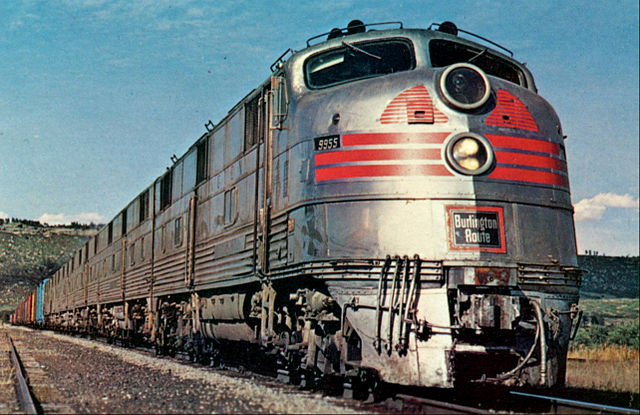The Exposition Flyer was a passenger train jointly operated by the Chicago, Burlington & Quincy (CB&Q), Denver & Rio Grande Western (D&RGW), and Western Pacific (WP) railroads between Chicago and Oakland, California, for a decade between 1939 and 1949, before being replaced by the famed California Zephyr.
Burlington officials at the Moffat Tunnel in 1934 as plans were being made to create the Exposition Flyer, the first transcontinental train to use the tunnel
Chicago, Burlington and Quincy Railroad
The Chicago, Burlington and Quincy Railroad was a railroad that operated in the Midwestern United States. Commonly referred to as the Burlington Route, the Burlington, or as the Q, it operated extensive trackage in the states of Colorado, Illinois, Iowa, Missouri, Nebraska, Wisconsin, Wyoming, and also in Texas through subsidiaries Colorado and Southern Railway, Fort Worth and Denver Railway, and Burlington-Rock Island Railroad. Its primary connections included Chicago, Minneapolis–Saint Paul, St. Louis, Kansas City, and Denver. Because of this extensive trackage in the midwest and mountain states, the railroad used the advertising slogans "Everywhere West", "Way of the Zephyrs", and "The Way West".
Texas Zephyr postcard
Chicago, Burlington and Quincy 4-6-0 steam locomotive 710 on static display at Iron Horse Park.
A Zephyr arriving at East Dubuque, Illinois
Burlington locomotive hauling an express freight c. 1967. These locomotives were also used for the Zephyr passenger trains.





